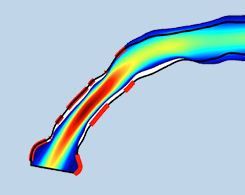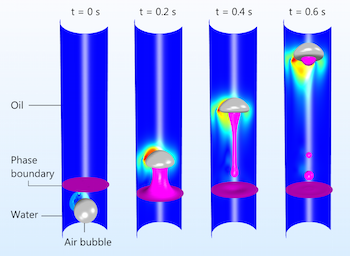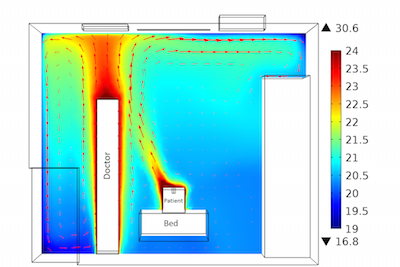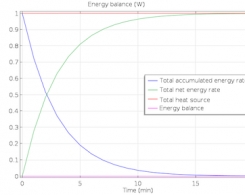Blog Posts Tagged CFD Module

Improving Vascular Access for the Treatment of ESRD Patients
By combining CFD simulations with shape optimization techniques, biomedical engineers can better understand and predict vascular access for renal disease treatments.

Optimize NACA Airfoil Designs with a Simulation App
You can design a simulation app to accurately compute lift and drag forces and optimize any airfoil following the NACA naming convention. Learn more and see an example demo app.

Studying the Swimming Patterns of Fish with Simulation
Researchers from the Università Roma Tre used simulation to study the carangiform swimming pattern of certain fish, the dynamics of which can be used to design aquatic vehicles and robots.

Simulate Three-Phase Flow with a New Phase Field Interface
The Three-Phase Flow, Phase Field interface, used for modeling separated three-phase flow, computes the shape of the interfaces between the 3 phases and accounts for interactions with walls.

Preventing Airborne Infection with CFD Modeling
Healthcare-associated infections affect millions of people around the globe. Airborne bacteria is one cause of patient infections that can be prevented with efficient ventilation system designs.

Simulating the Art of Swing Bowling in Cricket
The swing bowling move in cricket is as much an art form as it is an athletic feat. Researchers at the COMSOL Conference 2015 Boston simulated the fluid mechanics of conventional swing bowling.

Methods for Evaluating Mass and Energy Conservation
Ever wonder how to compute the mass conservation of a fluid flow simulation, or the energy balance of a conjugate heat transfer simulation? If so, keep reading >>

Nestlé Sweetens the Candy Production Process with Simulation
Question: How does a well-known candy company ensure that each of their signature chocolate bars has the same consistency, texture, and taste? Answer: Fluid flow simulation!
